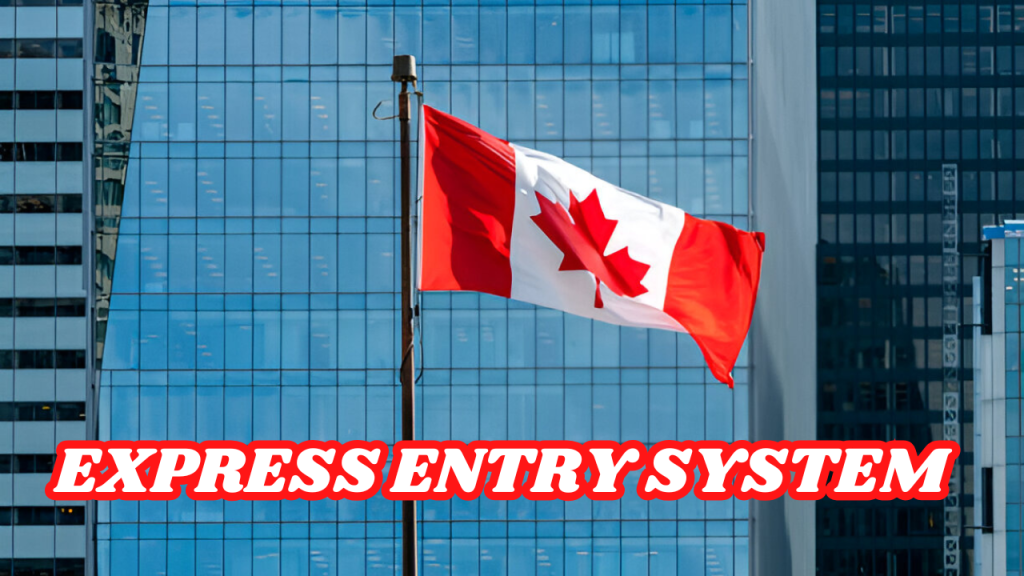The Express Entry program is Canada’s main way for skilled workers to get permanent residency. It started in January 2015. It was made to make the immigration process faster and easier for those who qualify.
It uses a points system to check candidates. This system looks at skills, education, and work experience. This article will give you a full look at the Express Entry program. It covers who can apply, how to apply, and tips from those who have been successful.
Key Takeaways
- The Express Entry program is vital for skilled workers seeking immigration to Canada.
- It was launched to simplify and expedite the application for permanent residency.
- Applicants are evaluated using a points-based system assessing various factors.
- The program focuses on skills, education, and work experience.
- This article details the eligibility criteria and application process for potential candidates.
- Success stories provide insight into navigating the Express Entry system effectively.
What is the Express Entry Program?
The Express Entry Program is a key part of Canada’s immigration system. It focuses on skilled workers and professionals to meet the country’s labor needs. This program makes the immigration process faster for those wanting to live in Canada permanently. It’s important for applicants to understand the basics to succeed.
Understanding the Basics
The Express Entry system uses a points system. Candidates are ranked by age, education, language skills, and work experience. They must create an online profile, which puts them in a pool of candidates.
Their profiles get a Comprehensive Ranking System (CRS) score. This score shows where they stand compared to others wanting to move to Canada.
Purpose and Benefits of Express Entry
The main goal of Express Entry is to bring in skilled workers who can help the Canadian economy. The program offers several benefits:
- It has faster processing times, helping applicants get their immigration status sooner.
- It makes the selection process clear, showing how candidates are chosen.
- It gives applicants and their families a chance to become citizens after meeting residency requirements.
- It has different immigration streams for various candidates and their unique skills and experiences.
How the Express Entry System Works
The Express Entry system makes immigration easier by breaking it into simple steps. It starts with creating candidate profiles. Candidates share important details to see if they fit for permanent residency in Canada. We’ll look at the key steps in this system.
The Immigration Process Overview
Candidates start by submitting their profiles. This is a key step as profiles compete in a pool. They are ranked by the Comprehensive Ranking System (CRS). The highest-scoring candidates are invited to apply for permanent residency.
Submission of Profiles
Creating a profile is easy. You just fill out an online form. It asks for your personal info, work history, language skills, and education.
It’s important to meet the criteria for different immigration categories. You can update your profiles anytime to show changes in your situation.
| Step | Description |
|---|---|
| 1. Create Profile | Complete an online profile with personal details and qualifications. |
| 2. Enter Pool | Submit profiles to enter the Express Entry pool for ranking. |
| 3. CRS Ranking | Profiles are scored based on the Comprehensive Ranking System. |
| 4. Invitation to Apply | Receive invitations based on ranking during regular draws. |
| 5. Submit Application | Successful candidates submit their detailed applications for assessment. |
Eligibility Criteria for Express Entry
Understanding the eligibility criteria is key for those wanting to move to Canada through Express Entry. Applicants need to meet certain requirements to submit their profiles and get a chance at permanent residency.
Key Requirements
When looking at the Express Entry program, several important requirements come into play:
- Education: You need a minimum level of education, usually a Canadian high school diploma.
- Work Experience: You must have relevant experience in a skilled job.
- Language Proficiency: You need to show you can speak English or French well. This is tested through IELTS or CELPIP.
- Admissibility: You should not have any legal or health issues that could stop you from entering Canada.
Determining Your Eligibility
To check if you’re eligible for Express Entry, compare your skills and experience to the immigration criteria. Use tools like the Canada.gov eligibility questionnaire and points calculators. These help figure out your Comprehensive Ranking System (CRS) score.
Your score is based on your skills, work experience, and other factors. It shows how likely you are to get an Invitation to Apply (ITA).
Different Programs Under Express Entry
The Express Entry system has several immigration pathways. Each one targets different groups of applicants. Knowing these programs helps candidates find the best way to get permanent residency in Canada.
Federal Skilled Worker Program
The Federal Skilled Worker Program (FSWP) is a key part of Express Entry. It’s for people with work experience outside Canada who want to live and work here. They need to meet certain language, education, and work experience standards.
The Express Entry points system checks these qualifications. It makes sure the most qualified get Invitations to Apply (ITAs) for permanent residency.
Canadian Experience Class
The Canadian Experience Class (CEC) is for those with work experience in Canada. It helps applicants use their Canadian work experience to get permanent residency. To qualify, they need at least a year of skilled work in Canada and meet language standards.
Federal Skilled Trades Program
The Federal Skilled Trades Program (FSTP) is for skilled tradespeople wanting to move to Canada. They must prove their trade skills and experience. They also need to show they can speak English or French well.
They can either have a job offer from a Canadian employer or a trade certificate from a Canadian authority.
Calculating Your CRS Score
The Comprehensive Ranking System (CRS) is key in the Express Entry program. It ranks candidates based on a points system. Your CRS score shows where you stand among applicants. It affects your chance to get an Invitation to Apply (ITA) for permanent residency in Canada.
The Comprehensive Ranking System Explained
The CRS uses a clear structure to assess candidates. It looks at many criteria. The higher your CRS score, the better your chances in government draws.
Factors Affecting Your CRS Score
Several factors can impact your CRS score:
- Work Experience: You can get up to 15 points for both foreign and Canadian work.
- Education: You can earn up to 25 points for your education.
- Language Proficiency: Up to 28 points are available for your first official language skills.
- Canadian Work Experience: You can get extra points for Canadian work experience.
- Job Offers: A job offer can significantly increase your score.
- Provincial Nominations: Candidates with provincial nominations get extra points.
Knowing these factors is key for improving your CRS score. Proper preparation and evaluation can help you make the most of this immigration points system.
| Factor | Maximum Points |
|---|---|
| Work Experience | 15 |
| Education | 25 |
| Language Proficiency | 28 |
| Canadian Work Experience | 30 |
| Job Offer | 10 |
| Provincial Nomination | 600 |
How to Improve Your CRS Score
To boost your CRS score, you need a solid plan and to know what matters. There are many ways to up your score and stand out in the Express Entry pool. Getting more points can really help you get an Invitation to Apply (ITA). Here are some top tips to up your score.
Tips for Increasing Your Points
Here are some steps to up your CRS score:
- Improve language test scores: Do well on IELTS or CELPIP to earn more points.
- Gain additional work experience: More experience means more points.
- Obtain higher educational qualifications: Studying more can boost your score.
- Acquire a job offer from a Canadian employer: A job offer can really help your score.
- Network within Canadian industries: Making connections can lead to job offers and more.
- Seek skills development opportunities: Courses or certifications can add points.
Utilizing a Points Calculator
Using a points calculator is a smart way to guess your CRS score before applying. Online tools let you input your details and see your score instantly. This helps you see where you need to improve, making it easier to get more points.
Steps to Apply for Express Entry
Starting the Express Entry application process involves several important steps. First, gather all the necessary documents. These documents are key to showing you’re eligible to immigrate. Keeping everything organized will make the process smoother and improve your chances of success.
Gathering Required Documents
Before you start, make sure you have all the required documents ready. You’ll need:
- Language test results (CELPIP, IELTS, or equivalent)
- Educational Credential Assessment (ECA) report
- Letters proving work experience
- Proof of funds to support your stay in Canada
Getting these documents early can prevent delays later. Once you have everything, you’ll be ready to fill out your online profile.
Submitting Your Application
After getting an Invitation to Apply (ITA), you must act fast. You have 60 days to apply for permanent residency. This step requires filling out detailed forms and attaching all necessary documents.
Also, remember to pay the required fees. Your application will go through a detailed check once submitted. The time it takes can vary, depending on your case. Being organized and focused during this time is crucial for a positive outcome.
What Happens After Submitting Your Profile?
After you send your profile to the Express Entry pool, you hope to get an Invitation to Apply (ITA). This is a big step. It means you’re one step closer to moving to Canada.
Getting an ITA is based on your score in the Comprehensive Ranking System (CRS). The Canadian government looks at who fits their labor market needs best.
Receiving Invitations to Apply (ITA)
Getting an ITA is a big deal. It means you’re among the top candidates. You’ll get a chance to apply for permanent residency in Canada.
To stay competitive, you need to keep or boost your CRS score. This is crucial for getting noticed in the draws.
Next Steps After Receiving an ITA
When you get an ITA, you need to act fast. Here are the next steps:
- Submit your permanent residency application with all needed documents.
- Get medical exams to check if you meet health standards.
- Do security background checks to be admissible.
By finishing these steps, you’ll get your application approved. This leads to a Confirmation of Permanent Residency (COPR). It’s a big win, showing you’re ready to start your new life in Canada.
Common Challenges in the Express Entry Process
The Express Entry system has many challenges for candidates. These include complex documentation and understanding the points system. Many find it hard to move to Canada because of these application difficulties.
Navigating the Application Process
Many candidates face challenges in Express Entry. They struggle with gathering documents and meeting eligibility criteria. Key challenges include:
- Gathering required documentation such as educational credentials and work experience proof.
- Meeting prescribed language proficiency standards, which can be restrictive.
- Accurately evaluating and calculating CRS challenges, ensuring the score maximizes competitiveness.
Getting help from immigration consultants or using government resources is crucial. Many find this support makes the application process easier.
Addressing the Points System
The points system is another challenge. The Comprehensive Ranking System (CRS) changes due to policy or labor market shifts. This can affect applicants in several ways:
- Difficulty achieving competitive CRS scores without job offers or previous Canadian work experience.
- The need for continuous monitoring of system adjustments affecting their eligibility.
- Emphasis on the importance of staying informed to enhance overall scores.
Understanding these dynamics helps candidates better navigate the addressing points system. By staying informed and adapting, they can boost their chances of success in Express Entry.
Success Stories: Real Experiences with Express Entry
Looking at success stories from those who went through Express Entry offers real insights. Many share how they boosted their CRS scores and got their invitations. Their success often comes from hard work, networking, and sometimes getting help from immigration experts.
Case Studies of Successful Applicants
There are many stories of success in the program. Each one shows different challenges and how they were solved. Here are a few examples:
| Applicant | Initial CRS Score | Final CRS Score | Key Strategy |
|---|---|---|---|
| Maria | 420 | 470 | Language Improvement |
| Rahul | 390 | 450 | Additional Work Experience |
| Lina | 430 | 485 | Job Offer from Canada |
Lessons Learned from the Process
People who went through Express Entry have learned a lot. They say patience and preparation are key. Here are some tips they often give:
- Start gathering documents early to avoid delays.
- Use points calculators regularly to track your score.
- Connect with immigrant communities for support and advice.
- Consider getting professional help to clear up any doubts.
Conclusion
The Express Entry Program is a big chance for skilled workers to start their lives in Canada. It’s important to know the rules and how to improve your Comprehensive Ranking System (CRS) score. This makes the process easier to follow.
Getting ready well and using the available resources can really help. This makes it easier to get permanent residency in Canada. Canada is known for its diversity and chances for growth.
In short, being well-prepared and knowing the process is key. Those ready to start this journey are closer to a promising life in Canada. Canada is famous for its welcoming nature and lively communities.








